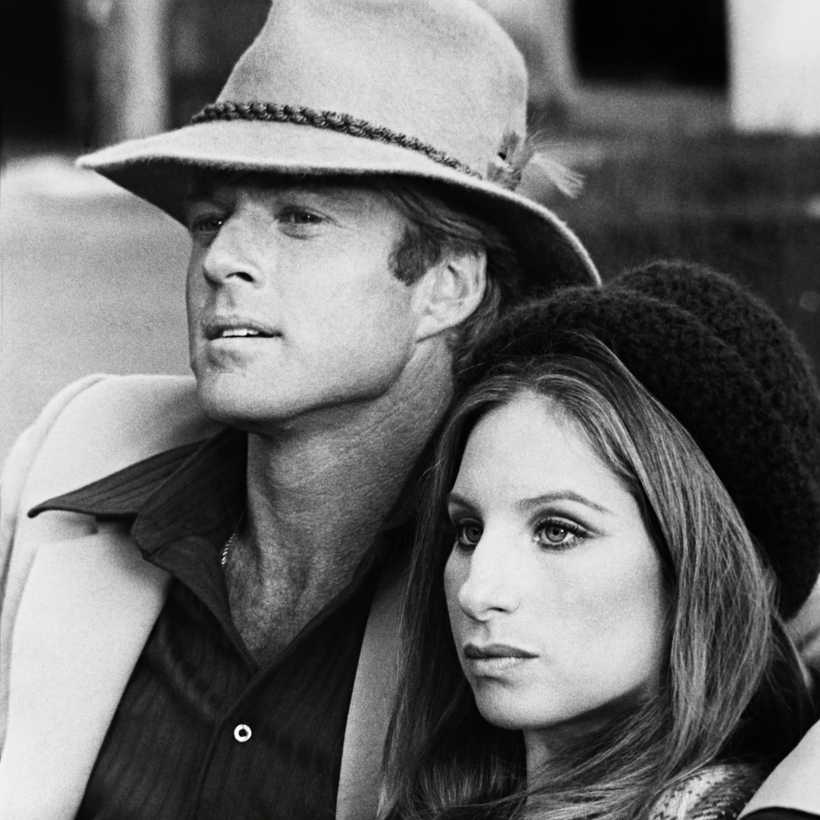What explains the enduring, clingy hold The Way We Were has on audiences? That is the mystery Tom Santopietro attempts to solve in The Way We Were: The Making of a Romantic Classic.
With most “making of” accounts, like those devoted to All About Eve, Chinatown, The Godfather, and Goodfellas, such a question wouldn’t arise—their canonical status is assured. And with the “unmaking of” exposés of infamous follies such as Heaven’s Gate and The Bonfire of the Vanities, the spectacle of a runaway train of foolhardy miscalculations, egos gone amuck, and exploding budgets offers a feast of Schadenfreude for film buffs.
But The Way We Were? This creaky contraption and leaky concoction, this honey trap of Hollywood hooey? Even upon its release, in 1973, the film’s disjointed structure, rackety momentum, corny touches, and cologne-ad montages were derided or fondly mocked, and the passage of time has done nothing to smooth away its problem areas. And yet how we continue to dote on it.

From its conception, The Way We Were was at cross-purposes with itself, the differing perspectives of what the movie was about sharpening with each volley of angry messages and phone calls between the producer, Ray Stark; the director, Sydney Pollack; and the original screenwriter, Arthur Laurents (a real sour ball).
An opposites-attract love story between a WASP-y golden retriever who glides through an endless field of kismet (Robert Redford’s Hubbell Gardiner) and a socially conscious Jewish striver whose mouthy assertion and ambition camouflage gnawing insecurity (Barbra Streisand’s Katie Morosky), The Way We Were unfolds against the fraught backdrop of the Red Scare and the Hollywood blacklist. Therein lies the nub of contention.
Laurents wanted to emphasize the poisonous Cold War witch-hunt atmosphere that turned friends and allies into informers; Pollack’s prime directive was to jostle the story and characters along and keep his stars happy without getting mired in historicity and high-flown rhetoric. Finding the right balance between these two imperatives turned the production into a seesaw battle, with, as Santopietro inventories, scenes dropped, scenes added, an emergency squad of other screenwriters brought in to work their voodoo, and plenty of acrimony to go around.
“You must murder your darlings,” goes an old adage in creative writing. But Laurents, like most writers, didn’t like having his darlings murdered, especially at what he perceived as the ham-fisted hands of Sydney Pollack.

Yet when an early cut of The Way We Were was screened for a civilian audience, it was clear that Pollack’s concerns were more on the mark. Whenever the background intruded on the foreground, the audience got antsy and distracted, “leaving the theater to buy popcorn and make a phone call or two.” Back into the I.C.U. of the editing room the film went, with Margaret Booth working valiantly to snip and chop while preserving a semblance of continuity. When The Way We Were was finally released, in October of 1973, its swoony, sunlit glamour couldn’t fully obscure its pockmarked hull.
It was the New Yorker film critic Pauline Kael who best captured the flawed yet unsinkable nature of the film: “The Way We Were is a fluke—a torpedoed ship full of gaping holes that comes snugly into port.” Most of the other notices ranged from mildly enthusiastic to perfunctory and even sneering, with Stanley Kauffmann in the New Republic dismissing Streisand as a “monster.”

No one anticipated that decades later the movie would be considered a schmaltzy perennial while most of the competition yellowed into old newsprint. Nominated for best actress for her performance in The Way We Were, Streisand lost out to Glenda Jackson, who co-starred with George Segal in the misfit romance A Touch of Class, and when was the last time you heard about that charmer?
So what accounts for The Way We Were’s irresistibility? From Santopietro’s book, three elements push to the fore.
First, the star chemistry of Streisand and Redford. Seems self-evident, yes? Two Hollywood dazzlers at the top of their game. Yet their rightness for each other on-screen wasn’t preordained; it could easily have gone wrong, or flattened into a stalemate of vanities.
As Santopietro observes, Redford wouldn’t achieve the same sparky spell with Jane Fonda, Meryl Streep, Lena Olin, or Michelle Pfeiffer, none of whom are slouches. And while Streisand may have enjoyed a wacky screwball rapport with Ryan O’Neal in What’s Up Doc?, her later, more serious pairings with unimpeachable torsos of masculinity such as James Caan, Nick Nolte, and Jeff Bridges didn’t ring the same chimes.
In The Way We Were, Streisand’s graspy, hortatory passion and Redford’s cagey reticence embodied how unresolvably right and wrong Katie and Hubbell were for each other, with no small help from Pollack’s gift as an actor whisperer, which he would later put to such patient use in Tootsie, another Troubled Production.

Second, that song. Composed by the then relatively unknown Marvin Hamlisch, with lyrics by Alan and Marilyn Bergman, and belted out to the sun and moon by Her Babness, “The Way We Were” is a butterscotch sundae of a number that underscores and overarches the theme of the film and its emotional ardor. (Compare it to Henry Mancini’s “Moon River,” which has no real connection to the brittle sophistication of Breakfast at Tiffany’s.) Streisand’s crooning seems to conjure the movie into existence, an improbable feat that we now take for granted.
And, finally, the ending. If you’ve never seen The Way We Were (which, frankly, seems un-American), we won’t reveal any spoiler-ish detail. Let’s just say it’s a rarity in movie romances of that era and those ever since in its maturity, delicacy, and bittersweet closure. We understand that what brought Katie and Hubbell together also drove them apart, and there’s no attempt at a contrived reconciliation or re-start. For an imperfect film, it’s the perfect ending.
Always scheming to improve upon perfection, however, Hollywood hankered for a sequel that would re-unite Streisand and Redford and back up the truck for another box-office haul. Despite his disgruntlement with the original, Laurents began devising various scenarios in which Katie and Hubbell would meet again and continue their saga in The Way We Changed (oy); then Pollack started juggling his own ideas.
Nothing came to fruition, for which we should lift our faces to the heavens and give thanks. Every possible story line Laurents and Pollack came up with was a guaranteed groaner, perhaps the most preposterous having Katie, Hubbell, and their campus-radical daughter converge upon the 1968 Democratic Convention, in Chicago, because nothing enhances romance like clouds of tear gas and billy clubs whacking protesters’ skulls.
No, The Way We Were is best left as a one-off reverie, an unrepeatable feat of serendipity.

James Wolcott is a Columnist for AIR MAIL. He is the author of several books, including the memoir Lucking Out: My Life Getting Down and Semi-Dirty in the Seventies and Critical Mass, a collection of his essays and reviews

